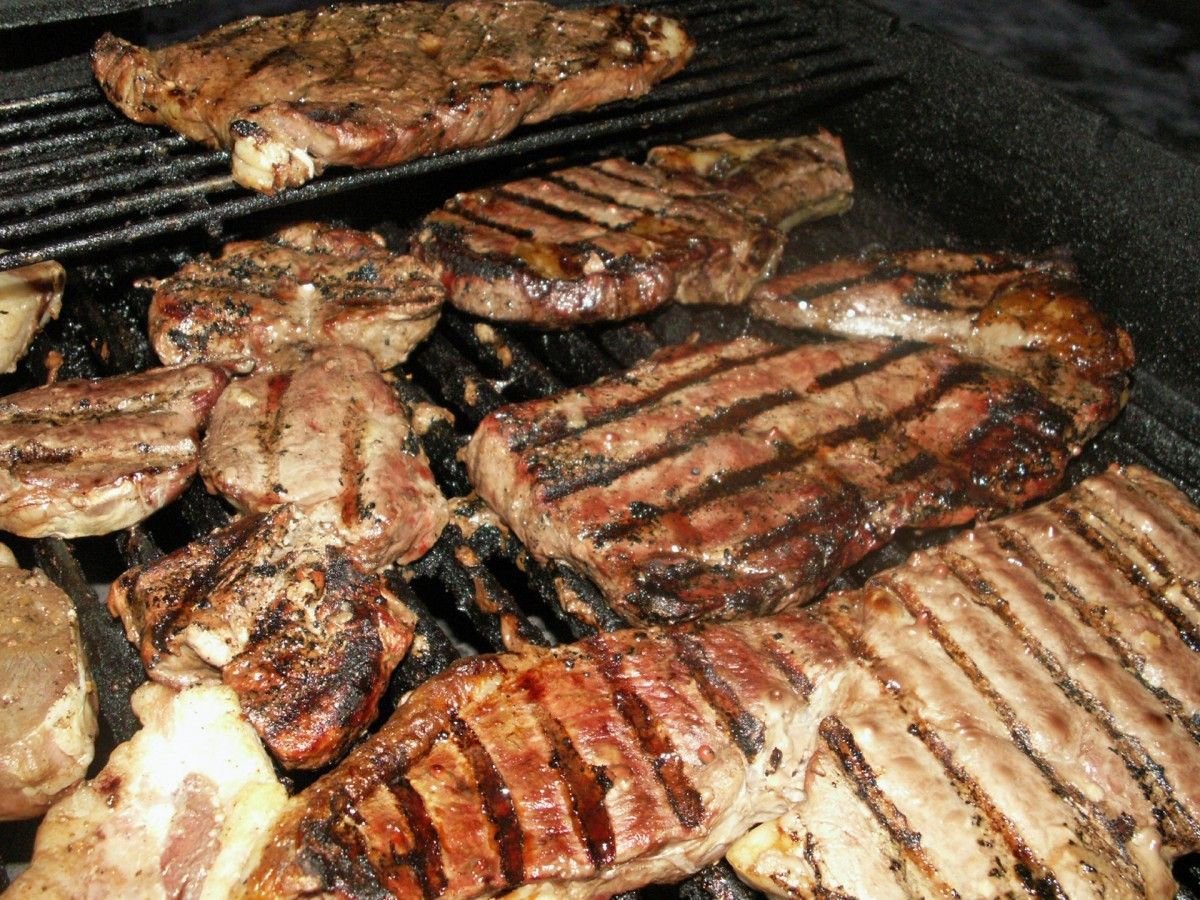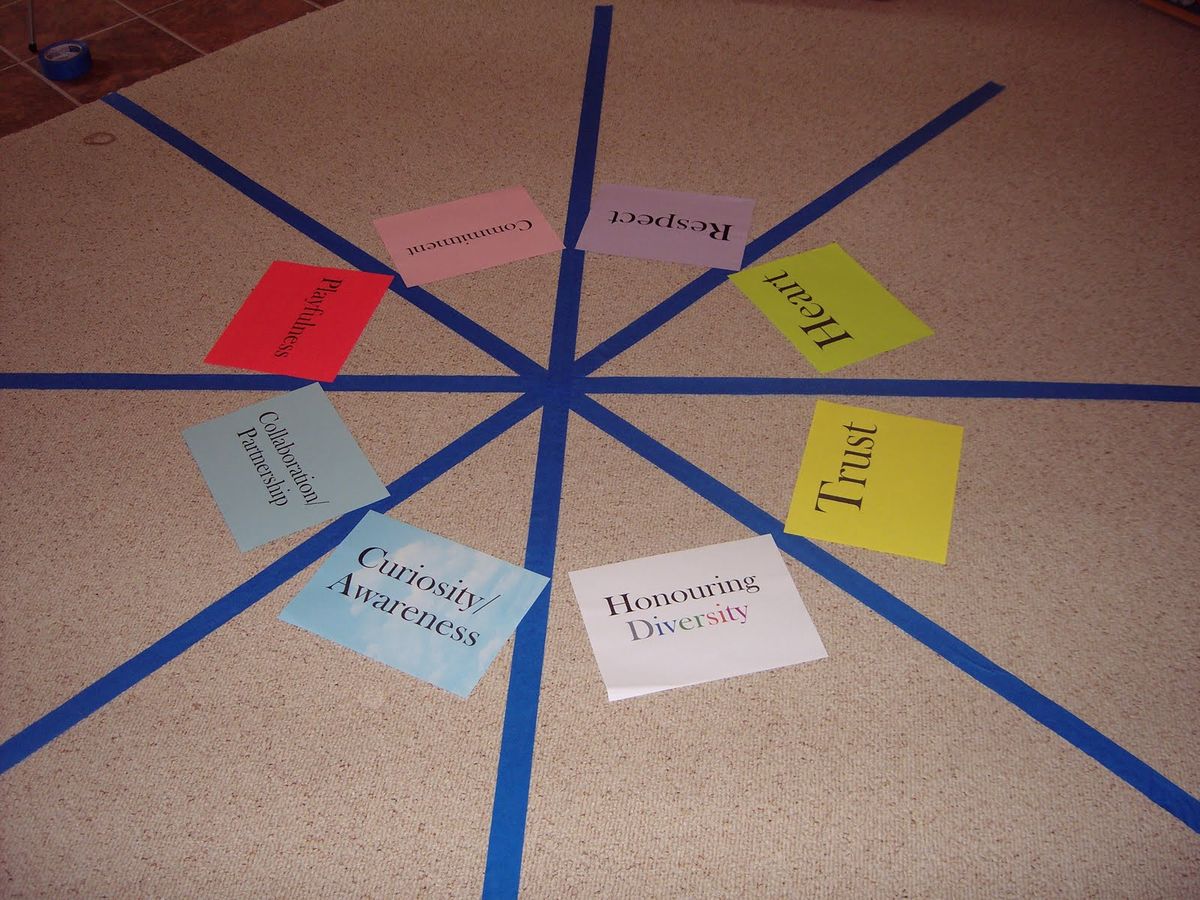Portion control is a cornerstone of successful weight management, offering a practical and sustainable approach to calorie control and mindful eating. By incorporating these essential portion control tips into your daily routine, you can take control of your eating habits, manage your weight more effectively, and enjoy a healthier relationship with food.
Key Takeaways
- Portion control helps prevent overeating and curbs cravings, aiding in overall weight loss.
- Using smaller plates and pre-portioning snacks can trick your brain into feeling satisfied with less food.
- Mindful eating techniques, such as listening to hunger cues and avoiding distractions, enhance portion control.
- Measuring tools like cups, spoons, and food scales are essential for accurate portion control.
- Reading food labels carefully helps you understand serving sizes and spot hidden calories.
Understanding Portion Control: The Basics
What is Portion Control?
Portion control is all about managing the quantity of food we consume at each meal or snack. It’s not about limiting your food choices but rather eating exactly how much food your body needs—no more, no less. This approach allows for flexibility and moderation, making it a more realistic and enjoyable way to manage weight long-term.
Why Portion Control Matters
Portion control is a key component of weight management. It’s not about dieting or deprivation but about balance and moderation. By understanding the impact of portion sizes on your calorie intake, you can make smarter food choices and maintain a healthy weight. This simple, effective strategy can improve your overall health and well-being.
Common Misconceptions
Many people think portion control means eating tiny amounts of food or feeling hungry all the time. However, it’s more about understanding how much to eat rather than what to eat. By moderating portion sizes, you can enjoy a wide variety of foods while still managing your calorie intake. This promotes balanced nutrition and supports long-term weight management.
Remember, portion control is not about eliminating your favorite foods but enjoying them in the right amounts. This makes it easier to stick to your weight loss journey and achieve lasting results.
Simple Tricks to Control Your Portions

Using Smaller Plates
One of the easiest ways to control your portions is by using smaller plates. A standard-sized portion will look small on a larger plate, making you feel dissatisfied. By switching to a smaller plate, you can trick your brain into thinking you’re eating more than you actually are. This simple shift can prevent overloading and help you feel more satisfied with less food.
Pre-Portioning Snacks
Pre-portioning your snacks can be a game-changer. Instead of eating directly from a large bag of chips or a tub of ice cream, divide them into smaller, individual portions. This way, you’re less likely to overeat. It’s a practical approach that helps you stay mindful of how much you’re consuming.
Mindful Eating Techniques
Mindful eating is all about paying attention to your hunger cues and eating slowly. When you eat mindfully, you’re more likely to notice when you’re full, which can prevent overeating. Try to avoid distractions like TV or smartphones while eating. Focus on your food, savor each bite, and listen to your body’s signals. This technique not only helps with portion control but also enhances your overall eating experience.
Remember, portion control doesn’t mean you have to eat tiny amounts or measure out precisely the number of peas on your plate. It’s about making smarter choices and being mindful of how much you’re eating.
Portion Control Tools You Need
When it comes to portion control, having the right tools can make all the difference. Accurate measurements are the cornerstone of effective food portions for weight loss. Here are some essential tools that can help you stay on track:
Measuring Cups and Spoons
Measuring cups and spoons are a must-have in any kitchen. They help you measure your food intake accurately, ensuring you’re not overeating or undereating. It’s amazing how much easier it is to stick to your portion sizes when you have these handy tools.
Portion Control Plates
Portion control plates are designed to help you visualize the right amount of food for each meal. These plates often come with sections for different food groups, making it easier to balance your meals. One popular option is the ezy dose (blue) meal measure portion control/weight management plate. It’s sturdy, easy to clean, and helps you keep your portion sizes in check.
Food Scales
A food scale is another essential tool for portion control. It allows you to weigh your food, giving you a more accurate measurement than cups or spoons. This is especially useful for foods that are difficult to measure by volume, like meat or cheese. By using a food scale, you can ensure you’re eating the right amount and not going overboard.
Remember, the goal is not to restrict your food intake but to balance it. Using these tools consistently can help you maintain a balanced diet and achieve your weight loss goals.
How to Read Food Labels for Portion Control
Understanding Serving Sizes
The first thing I always look for on a nutrition label is the “servings per container” and “serving size.” You’ll usually find them at the top of the label. This information is crucial because it tells you how much of the product the nutritional information applies to. For example, if a bag of chips has two servings per container and you eat the whole bag, you need to double the nutritional values listed.
Decoding Nutritional Information
Once you know the serving size, the next step is to look at the nutritional information. Pay attention to the calories, fats, sugars, and other nutrients. Here’s a quick guide to what you should focus on:
- Calories: This tells you how much energy you’ll get from one serving. If you’re trying to lose weight, you’ll want to keep this number in check.
- Fats: Look for the types of fats listed. Unsaturated fats are generally better for you than saturated and trans fats.
- Sugars: Be mindful of added sugars. Natural sugars found in fruits and dairy are okay, but added sugars can quickly add up.
Spotting Hidden Calories
Hidden calories can be a real pitfall. These are often found in the form of added sugars and fats that you might not immediately notice. For instance, a seemingly healthy granola bar might be loaded with added sugars. Always check the ingredients list for hidden sources of calories.
Remember, the goal is not to restrict your food intake but to balance it. By understanding food labels, you can make more informed choices and better control your portions.
Eating Out: Mastering Portion Control at Restaurants

Eating out at restaurants can pose challenges for portion control, as serving sizes are often larger than what we need. To avoid overeating, consider splitting a meal with a dining companion, ordering appetizers or side dishes as your main course, or asking for a to-go container to portion out leftovers before you start eating. Additionally, be mindful of portion sizes when choosing menu items and opt for lighter, healthier options whenever possible.
Portion Control for Different Food Groups
Mastering the art of portion control for different food groups is a crucial step toward maintaining a balanced diet and achieving your health goals. It’s not just about eating healthy portions, but also about understanding the nutritional value of different food groups and how they contribute to your overall health. A comprehensive guide to portion control can help you make informed decisions about your diet, ensuring you get the right amount of nutrients without overeating.
Mindful Eating: The Key to Effective Portion Control

Mindful eating is a game-changer when it comes to portion control. It’s not just about what you eat, but how you eat. By paying attention to your hunger cues and eating more slowly, you can enjoy your food more and feel satisfied with less. This approach helps you avoid overeating and makes it easier to stick to your weight loss goals. Healthy eating can help you lose weight and improve your health, without making you feel overwhelmed.
Portion Control Tips for Busy Lifestyles
Meal Prepping
Meal prepping is a game-changer for anyone with a hectic schedule. By setting aside a few hours each week to prepare your meals, you can ensure you have healthy, portion-controlled options ready to go. This not only saves time but also helps you avoid the temptation of grabbing unhealthy snacks or fast food. Master portion control for weight management by planning your meals in advance.
Healthy On-the-Go Snacks
When you’re constantly on the move, it’s easy to fall into the trap of unhealthy snacking. Instead, opt for healthy on-the-go snacks like nuts, fruits, or yogurt. Pre-portion these snacks into small containers or bags so you can grab them quickly without overeating. This simple trick can make a big difference in your overall calorie intake.
Balancing Convenience with Nutrition
Balancing convenience with nutrition is crucial for maintaining a healthy diet when you’re busy. Look for quick and easy recipes that are also nutritious. For example, a salad with pre-washed greens, canned beans, and a light vinaigrette can be thrown together in minutes. Remember, portion control is a cornerstone of successful weight management. By making smarter choices, you can enjoy a variety of foods without overeating.
Implementing portion control for weight loss doesn’t mean you have to deprive yourself. Instead, it’s about making smarter choices and being mindful of how much you’re eating.
The Role of Hydration in Portion Control
Hydration plays a crucial role in effective portion control and overall weight management. When you’re well-hydrated, your body functions optimally, and you can better distinguish between hunger and thirst. This can prevent unnecessary snacking and overeating, which are common pitfalls in any weight loss journey. Hydration is key for weight loss, and incorporating it into your daily routine can make a significant difference.
Drinking Water Before Meals
One of the simplest tricks I’ve found is drinking a glass of water before meals. This helps to fill your stomach, making you feel fuller and reducing the likelihood of overeating. It’s a small habit that can have a big impact on your portion control efforts.
Hydrating Foods
Incorporating hydrating foods into your diet is another effective strategy. Foods like cucumbers, watermelon, and oranges not only keep you hydrated but also add volume to your meals without adding a lot of calories. This can help you feel satisfied with smaller portions.
Avoiding Sugary Drinks
Sugary drinks can be a major obstacle when it comes to portion control. They add unnecessary calories and can lead to spikes in blood sugar, which may increase your appetite. Instead, opt for water, herbal teas, or other low-calorie beverages to stay hydrated without the extra calories.
Remember, breaking through weight loss plateau: solutions and tips – burn my weight. Hydration is key for weight loss. Tips include drinking enough water, monitoring urine color, and eating hydrating foods.
By focusing on staying hydrated, you can support your portion control efforts and make your weight loss journey more manageable and sustainable.
Adapting Portion Control for Family Meals

Serving Family-Style
When it comes to family meals, serving family-style can be a game-changer. By placing all the dishes in the center of the table, everyone can help themselves to the portions they want. This method encourages kids to self-serve, teaching them to listen to their hunger cues and make healthier choices. Plus, it makes mealtime more interactive and enjoyable for everyone.
Encouraging Kids to Self-Serve
Encouraging kids to self-serve is not just about giving them independence; it’s about teaching them portion control from a young age. I like to offer a variety of healthy options and let them decide what and how much to eat. This way, they learn to recognize their own hunger and fullness signals, which is crucial for maintaining a healthy weight.
Making Healthy Choices Together
Making healthy choices together as a family can be both fun and educational. I often involve my kids in meal planning and preparation, which makes them more interested in trying new, healthy foods. We discuss the benefits of different foods and how they contribute to our overall health. This collaborative approach not only promotes better eating habits but also strengthens our family bond.
Remember, the goal is to create a supportive environment where everyone feels empowered to make healthy choices. It’s not just about portion control; it’s about fostering a positive relationship with food for the whole family.
Tracking Your Progress with Portion Control
Keeping a Food Journal
One of the most effective ways to track your progress with portion control is by keeping a food journal. Writing down everything you eat helps you stay accountable and aware of your eating habits. It doesn’t have to be fancy; a simple notebook or an app on your phone will do the trick. The key is consistency. By logging your meals and snacks, you can identify patterns and make necessary adjustments to stay on track.
Using Apps and Technology
In today’s digital age, there are countless apps designed to help you manage your portion control. These apps can track your calorie intake, suggest portion sizes, and even remind you to drink water. Some popular options include MyFitnessPal, Lose It!, and Cronometer. These tools make it easier to stay on top of your goals and provide a comprehensive guide to safe and sustainable weight loss.
Setting Realistic Goals
Setting realistic goals is crucial for long-term success. Instead of aiming for drastic changes, focus on small, manageable adjustments. For example, start by reducing your portion sizes by 10% and gradually increase as you become more comfortable. Celebrate your milestones, no matter how small, and remember that progress is progress. This approach not only makes the journey more enjoyable but also more sustainable.
Remember, the goal is not just to lose weight but to develop healthier eating habits that you can maintain for life. Tracking your progress helps you stay motivated and ensures that you’re moving in the right direction.
By incorporating these strategies, you can effectively monitor your portion control efforts and make informed decisions to achieve your weight loss goals.
Conclusion: Mastering Portion Control for Lasting Weight Management
Implementing portion control for weight loss doesn’t mean you have to deprive yourself. Instead, it’s about making smarter choices and being mindful of how much you’re eating. Portion control can help you enjoy a variety of foods without overeating. It’s about understanding that a serving of pasta at a restaurant is often much larger than the recommended serving size, or that a bag of chips can easily be split into multiple servings. By incorporating these essential portion control tips into your daily routine, you can take control of your eating habits, manage your weight more effectively, and enjoy a healthier relationship with food. Remember, portion control is a simple, effective strategy that anyone can implement to improve their health and well-being.
Frequently Asked Questions
What is portion control?
Portion control involves managing the amount of food you eat in one sitting to maintain a healthy weight and avoid overeating. It focuses on eating the right amount of food your body needs, no more and no less.
Why is portion control important for weight loss?
Portion control helps monitor your food intake, preventing overeating and curbing cravings. This can lead to a reduction in calorie intake, which is essential for weight loss.
How can I start practicing portion control?
You can start by using smaller plates, pre-portioning your snacks, and paying attention to serving sizes on food labels. Mindful eating techniques, such as eating slowly and without distractions, can also help.
Are there tools that can help with portion control?
Yes, tools like measuring cups, portion control plates, and food scales can help you accurately measure your food portions and ensure you are eating the right amounts.
Can I practice portion control when eating out?
Absolutely. You can share meals with others, ask for a half-portion, or box up half of your meal to take home. Choosing healthier options and being mindful of portion sizes can also help.
What are some common misconceptions about portion control?
Common misconceptions include the idea that portion control means you have to eat very little or deprive yourself of certain foods. In reality, it’s about balance and moderation, not deprivation.
How does hydration affect portion control?
Drinking water before meals can help you feel fuller and reduce the likelihood of overeating. Hydrating foods, such as fruits and vegetables, can also contribute to a feeling of fullness without adding many calories.
Is portion control suitable for busy lifestyles?
Yes, portion control can be adapted for busy lifestyles through meal prepping, choosing healthy on-the-go snacks, and balancing convenience with nutrition.
- Sustainable Weight Loss Strategies: Achieving Long-Term Success – June 16, 2024
- Cycling for Weight Loss: Pedal Your Way to a Healthier You – June 15, 2024
- Weight Loss Coaching: Personalized Guidance for Effective Results – June 15, 2024




